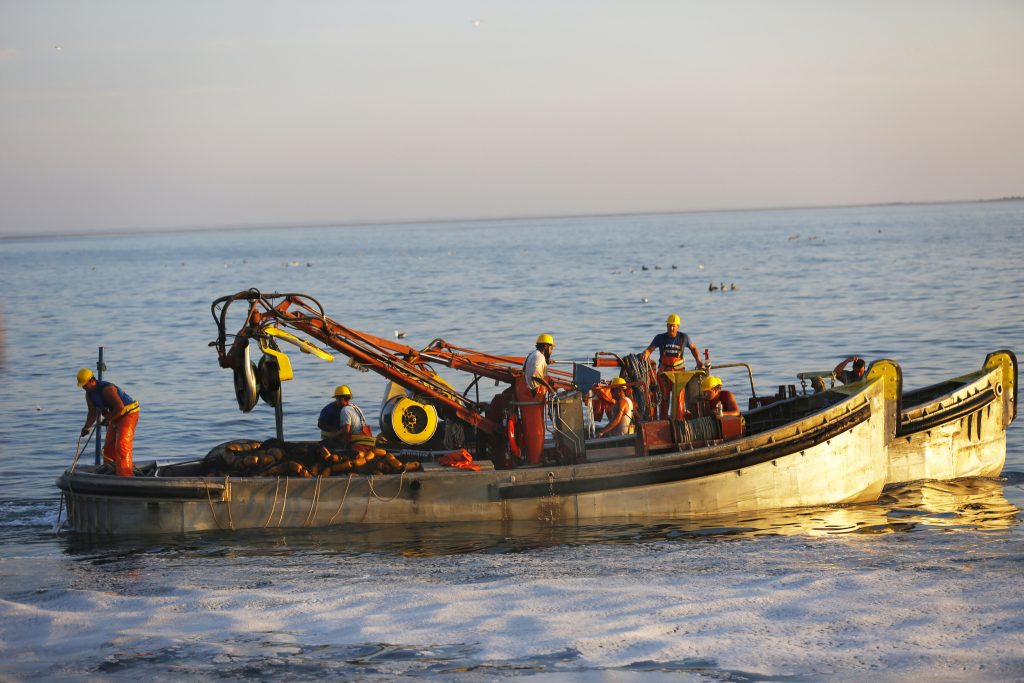November 13, 2023 – Charles Witek, a fisheries consultant, recreational fisherman, and writer of the “One Angler’s Voyage” blog, has recently called out sportfishing groups like the Coastal Conservation Association and Theodore Roosevelt Conservation Partnership for their “aggressive effort to place new restrictions” on commercial menhaden fisheries at the expense of needed management measures for recreational species.
In an October 8 post focused on the Gulf of Mexico, “Menhaden advocacy: A low-cost cause for recreational fishing organizations,” Mr. Witek called menhaden “the perfect cause for such organizations to take up, as it allows them to assume the mantle of conservationists, while arguing for regulations that will only impact the commercial fleet and will not place any additional burden on the recreational fishery.”
But as Mr. Witek pointed out, the Gulf menhaden population is “in good shape.” The most recent benchmark stock assessment completed by the Gulf States Marine Fisheries Commission in 2018 found that menhaden were neither overfished nor experiencing overfishing. The following year, the fishery was certified sustainable by the Marine Stewardship Council. An updated stock assessment conducted in 2021 showed the stock remains healthy. Meanwhile, other species in the Gulf — including speckled trout targeted by the recreational sector — are not so healthy.
“Given the overfished state of the speckled trout stock one might logically expect Coastal Conservation Association Louisiana, which was such a strong advocate of additional regulations to protect the undoubtedly healthy Gulf menhaden stock, to demand that Louisiana take immediate, meaningful action to rebuild the speckled trout population,” Mr. Witek wrote. “However, just the opposite occurred.”
“When recreational fishing groups begin to focus most of their conservation efforts on menhaden stocks, which are generally healthy, and ignore — or worse, oppose — needed management measures for marine finfish that are often sought by anglers, such groups’ commitment to conservation might well be questioned,” he wrote.
In an October 26 post, “Conserving striped bass: Don’t be misled by menhaden,” Mr. Witek noted a similar dynamic playing out on the Atlantic coast, but replacing speckled trout with striped bass.
“Let’s get two things straight from the start: Striped bass are having some serious problems, while Atlantic menhaden are doing just fine,” Mr. Witek wrote.
The latest striped bass stock assessment by the Atlantic States Marine Fisheries Commission shows the stock is overfished; Maryland has experienced spawning failure for the past five years; Virginia has experienced spawning failure for the past three years. Meanwhile, Atlantic menhaden are neither overfished nor experiencing overfishing; the fishery is certified sustainable by the Marine Stewardship Council; and managers have adopted ecological reference points, making it the first East Coast fishery to account for not just the health of the individual species, but also its role in the ecosystem.
“It’s completely clear, from a scientific perspective, that the current lack of striped bass has absolutely nothing to do with a lack of menhaden,” Mr. Witek wrote.
That hasn’t stopped recreational anglers like Phil Zalesak, president of the Southern Maryland Recreational Fishing Organization, from blaming the commercial menhaden fishery for the problems in the recreational sector. This can have negative impacts for striped bass conservation, according to Mr. Witek.
“Where Mr. Zalesak’s comments [at a recent ASMFC meeting] really went astray was when he noted that Maryland’s striped bass harvest had decreased by 72 percent since 2016, then alleged that such decrease was due to a lack of menhaden, and not overfishing,” Mr. Witek wrote. “That comment, more than any other that he made, exposed the danger of focusing on menhaden, rather than on striped bass biology, for if managers took that allegation at face value, it would mean that to rebuild the striped bass stock, their first concern should be rebuilding the menhaden stock, and not addressing striped bass fishing mortality. Such course could only lead to more problems for the bass population.”
It is important for fishery managers to stay focused on real conservation measures needed to rebuild the striped bass population and not get distracted by “unsupported allegations of a menhaden shortage,” Mr. Witek wrote.
“For make no mistake: There are people who are all too willing to stall the striped bass’ recovery, and to put the bass’ future in peril, in order to increase their short-term gains from the fishery.”
The ASMFC’s Atlantic Striped Bass Management Board “must hear our desire to reduce striped bass fishing mortality…It must hear of our concerns with spawning failure in the Chesapeake Bay…But the Board shouldn’t have to hear about menhaden at all,” Mr. Witek concluded.
Mr. Witek is an attorney who has held a seat on the Mid-Atlantic Fishery Management Council, served as president of the New York State Outdoor Writers’ Association, and represents New York on various fishery management bodies.

